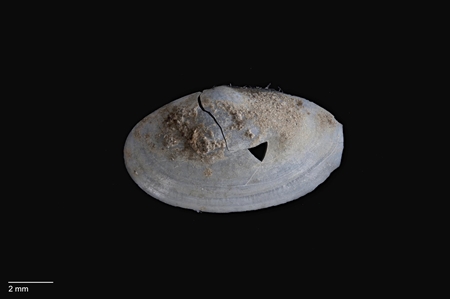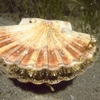General Description
This small, white, delicate, fragile shell is elongate with a somewhat rostrate posterior, a smooth shiny exterior and an internal ligament. A distinctive rib on the interior shell surface may be observed through the almost transparent shell. Shell up to 15 mm across.
Biology
This introduced species can be an indicator for eutrophic and anoxic conditions in sediment. It is endemic to the north-west Pacific Ocean including Japan and its distribution now includes California, USA and New Zealand. The first Australian record appears in the 1950s in Port Phillip Bay under a different name. This species is now well established throughout southern Australia.
Habitat
Usually in muddy sediments, from low tide to depth of 50 m.
Soft substrates
Distribution guide
North-western Pacific, USA, New Zealand, and southern Australia.
Species Group
Sea snails and shells › Bivalves
Depth
Shallow (1-30 m)
Deep ( > 30 m)
Water Column
Max Size
15 mm
Diet
Organic matter
Commercial Species
No
Global Dispersal
Introduced to Australia
Species Code
MoV 1565
Conservation Status
- DSE Advisory List : Not listed
- EPBC Act 1999 : Not listed
- IUCN Red List : Not listed








